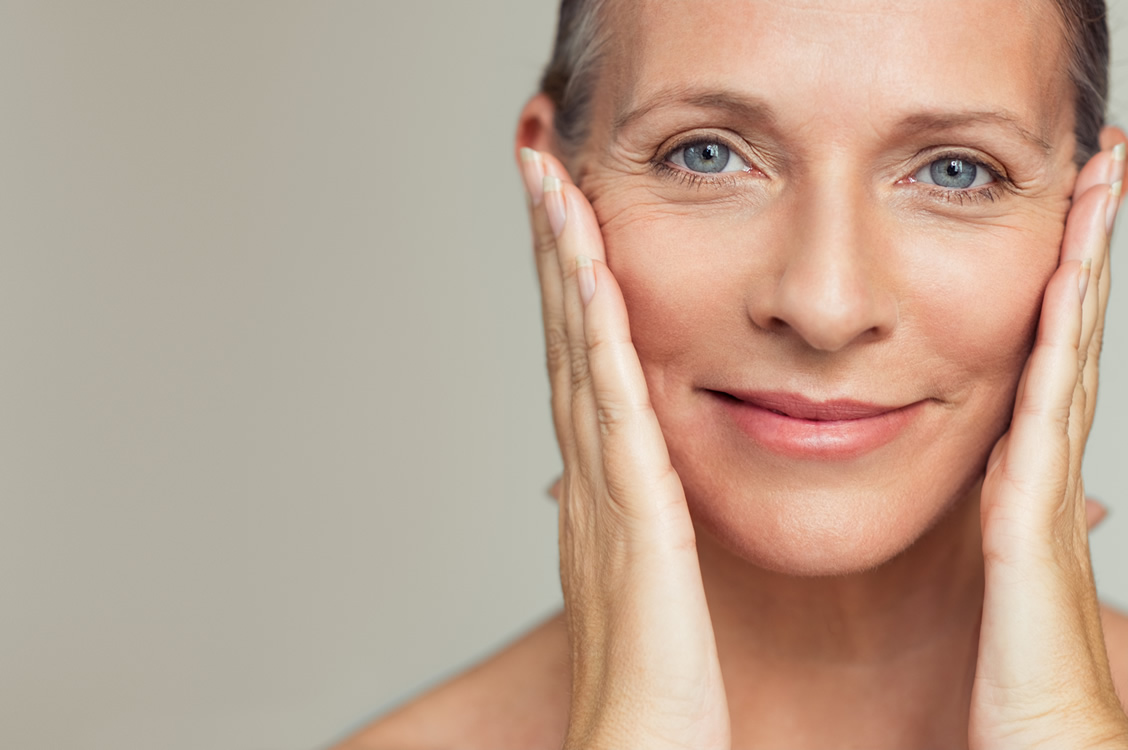Skin Structure

Your skin is a multi-layered organ that acts as a protective barrier and temperature regulator. It is also the first thing that people notice when they look at you, and it is never too late to make a good first impression.
The foundation of the skin is the subcutaneous. This is the layer that brings blood vessels and nerves to the skin and is important in regulating temperature. Up from the subcutaneous is the dermis. This layer contains hair follicles, sweat glands, sebaceous oil glands and specialized nerve cells that transmit the sensations of touch and pressure. The outer layer is the epidermis. This layer contains melanocytes (cells that produce melanin/pigment) and Langerhans’ cells (the frontline defense of the immune system in the skin).
Looking more closely at the epidermis, we see that it actually contains five layers of cell types. The bottom layer, the stratum basale, is where new cells are created. As these cells grow and divide they push already formed cells through progressively higher layers (spinosum, granulosum and licidum) until they flatten and eventually die, ending up in the stratum corneum (horny layer). It is from this layer that the dead cells are eventually sloughed off/removed to make way for newer, rising cells. This entire process takes approximately 14 days, except that the dead cells of the stratum corneum (SC) are not always sloughed off on schedule. In addition, the fact that the SC of darker-toned skin appears to contain more densely packed layers of dead cells, makes it all the more important that darker-toned skin gets the proper care.
If the SC cells are not removed, sebaceous oil and sudoriferous (sweat) secretions cannot flow evenly on the skin to keep it moisture-balanced, bright and even-toned. Instead, the skin looks dry, ashy and flaky. The SC layers may build up over time and the sweat and oil secretions can back up under the outer layer. The pressure created by this backup may eventually cause a rupture in the skin and pustules may form: becoming inflamed and infected. If improperly treated this may cause scarring, and extra melanin may rush to the traumatized area as well.
Commonly, people with darker-toned skin, ranging from wheat to olive to brown to black, use oil-based products such as cocoa butter, Shea butter, baby oil or body lotion to address their skin problems. While these products generally offer relief when used on arms, legs or the body, they may actually add to the problem when used on the much thinner, more delicate face and neck skin. Lightening creams and depilatory creams may also cause problems.

Whether or not you use an oil-based preparation on your face and neck, your skin is naturally producing its own sebum oil. Since these oils generally seek the easiest route of flow, to where the skin is thinnest and tightest (nose and forehead), a greasy “T-zone” is created. People who use alkaline soaps will often notice that their pores in the T-zone become impacted with hard plugs of wax; alkaline soaps chemically change the sebum oils into deposited fats, which clog the pores. When the dead SC cells over grow these waxy plugs, lumps often form and may lead to a “razor bump” condition.
Just as oil-based preparations and alkaline soaps can add to the skin’s problems, scrubbing pads, almond scrubs or other abrasive materials may do more harm than good. Under a microscope the SC is not a flat smooth layer. It is actually a series of hills and valleys, an aggregation of dead cells rising and falling at different levels. Abrasive materials only hit the peaks of the hills, doing nothing for the material lodged under the valleys. The most effective way to assist in removing dead skin cells and keeping pores clean is through a water-based (hydrolytic) process, the basis of the EON 5 Skin Care System.
